OCTOBER 29, 2022 : Today on Shabbat, we ventured on foot to find some off-the beaten-path Jewish Heritage sites in Thessaloniki.
Once again Mark returned to the Yad Lazikaron synagogue for morning services. Today he noticed there were some differences from Saturday morning services in other places. The order the prayers were said in was slightly different, and many of the tunes they used were new to him. Mark thought what was most special, was usually when opening the ark, a prayer from the Zohar is recited in Aramaic. Here, after saying the Aramaic, it was repeated in Ladino, with individual congregants taking turns singing the sentences. They also handed out sheets with the Ladino words transliterated into English and Greek, so guests could follow and participate.
After lunch (food from the vegan restaurant we purchased the day before – really good), our first destination was the old port of Thessaloniki. To reach the port, we first went through the Kapani market. This is a central market, very similar to the Carmel Market in Tel Aviv. There were stalls for clothes, for housewares, for fruits and vegetables, for fish and for meat. What seemed distinctly Greek, were the many stalls offering a very wide range of just olives.
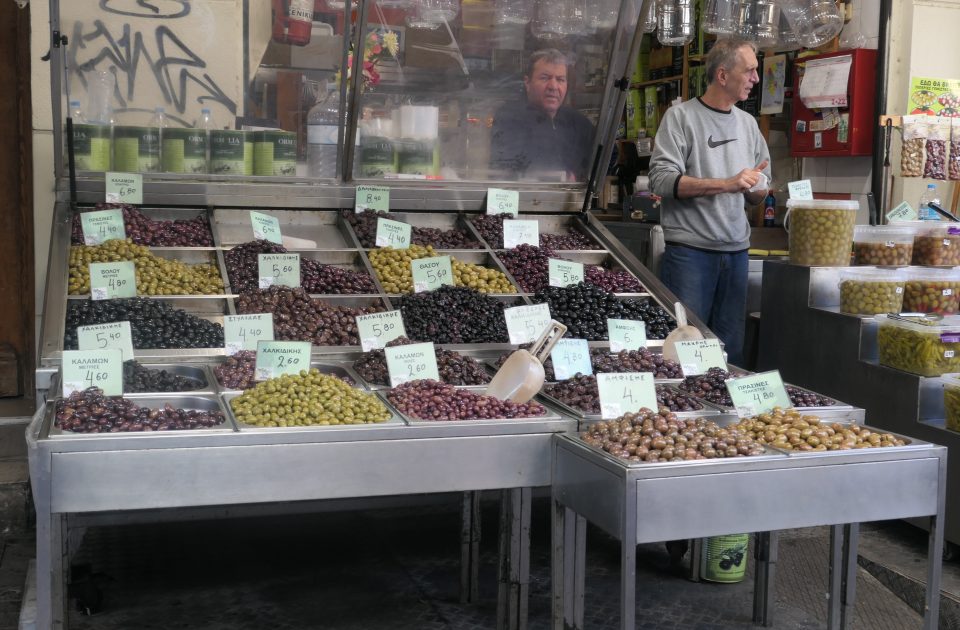
We reached the old port. Before the war, sailors complained the port was often closed – it was closed on Fridays for the Muslums, on Saturday for the Jews and on Sunday for the Christians – a good example of the mutual respect and harmony in Thessaloniki before the war.
We walked here in search of five Stolpersteine – stumbling stones. These are memorial tiles placed among the bricks of a sidewalk, engraved with the name, birth and death dates, and details of what happened to that person during World War II. They can be found throughout Europe, and the idea is that pedestrians will stumble upon and read them. Here in Thessaloniki, the municipality placed five stones to honor five of the port workers that were killed by the Nazis.
We knew that the stones were located at the old port, but it is a big port. With some detective work, taking hints from old newspaper articles with photos of the ceremony of laying down the tiles, we eventually found them.
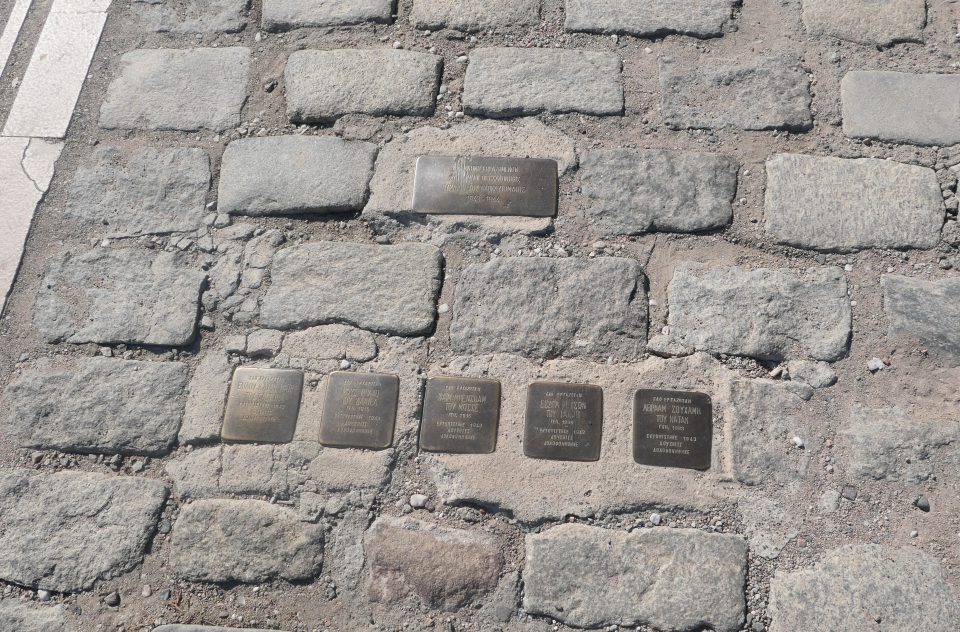
A couple of kilometers down the main road, was the old railway station. It was from this station that the 50,000 Jews of Thessaloniki were transported to Auschwitz-Birkenau in 19 convoys in 1943. A plaque on the side of the building commemorates this.

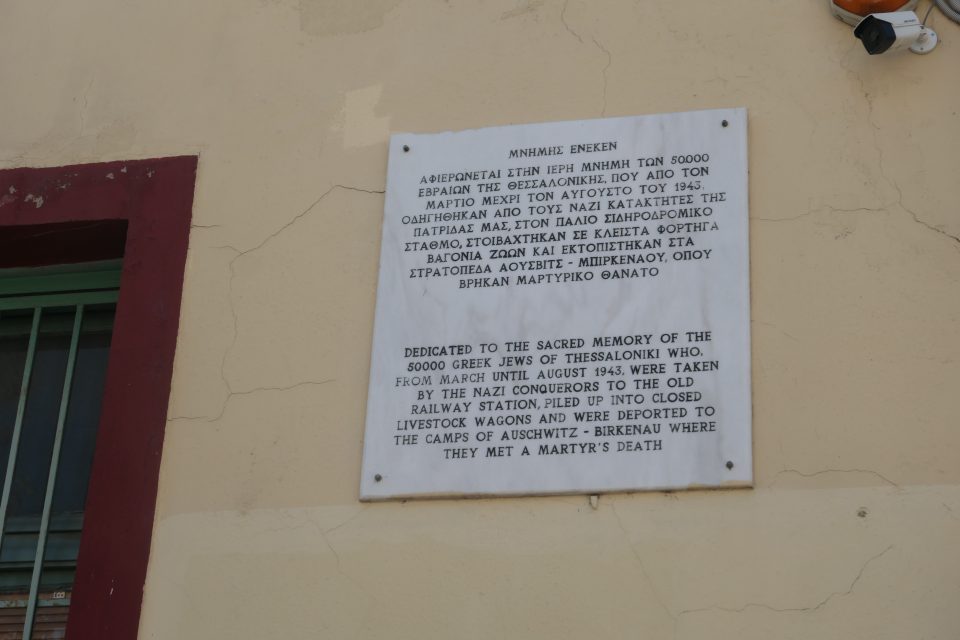
As we entered the yard behind the train station, there were some cattle cars in the distance. It was eerie to think that these might be the actual cattle cars that were used for the transport. As we approached the cars, we noticed that someone had placed Israeli flags on the door handle. Thank-you to the anonymous person who did that – offering a bit of light in the gloom.
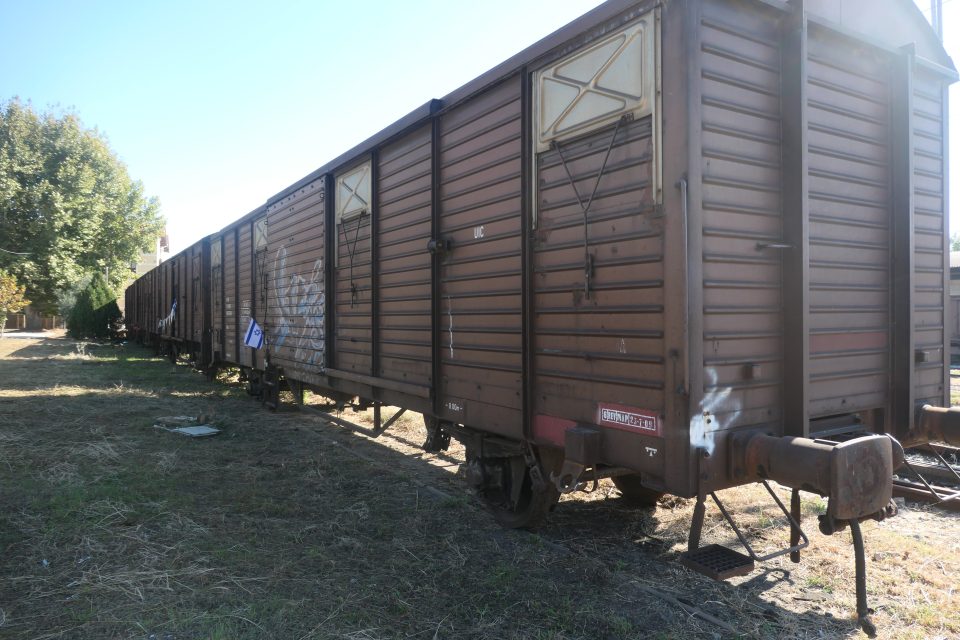
Our next stop was to be the site of the Holocaust Museum of Greece, that is supposed to be built in Thessaloniki. This would have added some more kilometers to our already long walk, so we decided to skip visiting the building site.
In 2018, the Greek Prime Minister Alexis Tsipras along with Israel’s President Reuven Rivlin ceremoniously laid down the foundation stone for the building. At the time, the mayor of Thessaloniki, Yiannis Boutaris supported the project. Since then, not much has happened. It seems that this is not a priority for the current mayor, and the project is not moving forward.
Our next off-the-beaten-track site was a graffiti memorial to the Holocaust. The work was created in 2021 by UrbanArt, an organization whose goal is to promote the art and the techniques of alternative form of culture such as public mural art, graffiti, street art, etc.
The mural is painted on the eastern wall of the New Railway Station yard. In the words of UrbanArt, it pays tribute to one of the most important and once numerous communities of Thessaloniki, the Jewish community, for the tragic consequences suffered by its population during World War II. The mural has seven consecutive panels telling a story inspired by photographs from the time period. A few days after the graffiti memorial was finished, it was vandalized and has since then been restored.
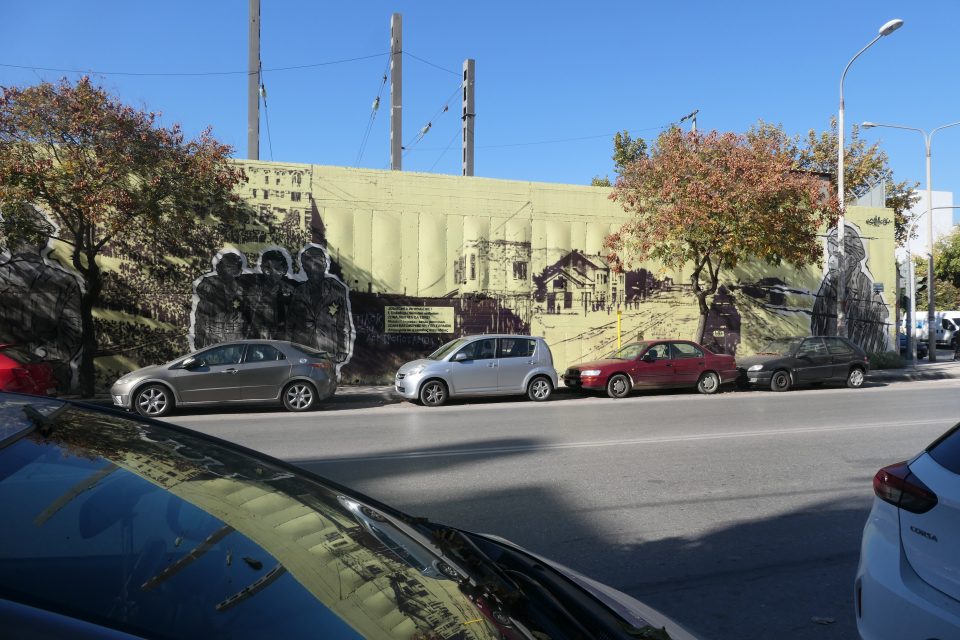
The last stop on our walk was the Church of St. Demetrios, the patron saint of Thessaloniki. It is believed that stones that came from the Old Jewish Cemetery (see previous blog for more information) were used in a restoration of the church in the 1940s. We walked around the church, closely scrutinizing the stones it is made of, but found no obvious indication of a connection to the tombstones .
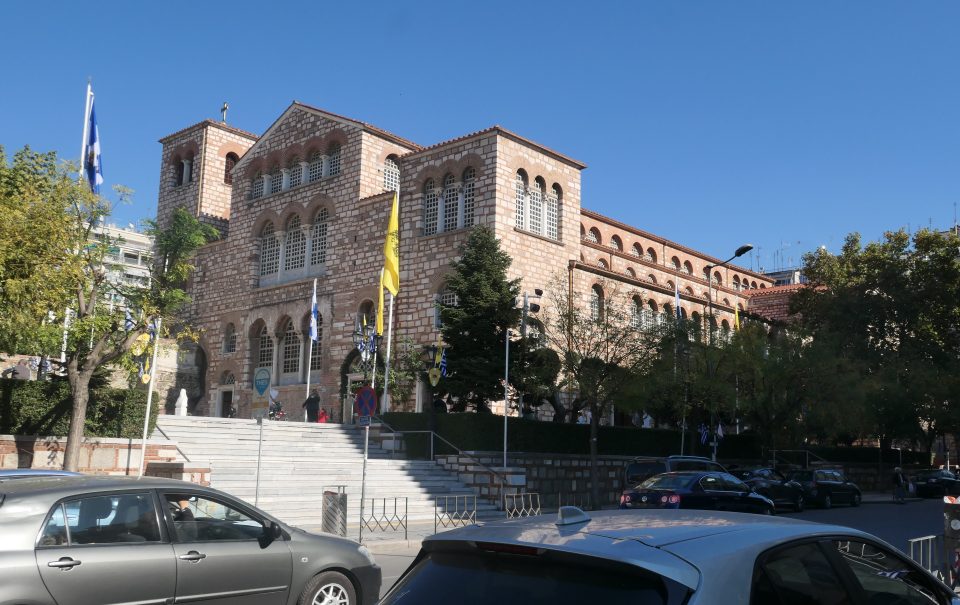
From here, we returned to our apartment (only one block away). We rested until the end of Shabbat, and then packed our bags to prepare to leave tomorrow. Once finished, we went for a final walk in the city. The streets were jammed full of people (mostly younger than us) and the restaurants were packed. We ended up having a second dinner at Roots, the vegan restaurant we enjoyed on our first day in Thessaloniki. Afterwards, back to the apartment, and to sleep. Tomorrow, we pick up our car and begin our drive.
Bye-bye nice place.
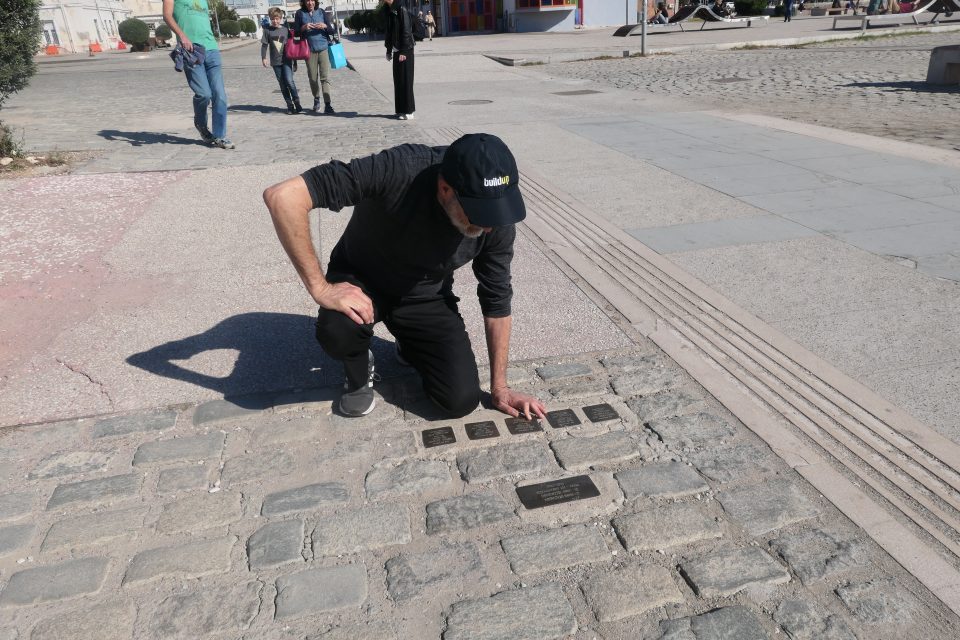
sounds like a nice shabbat